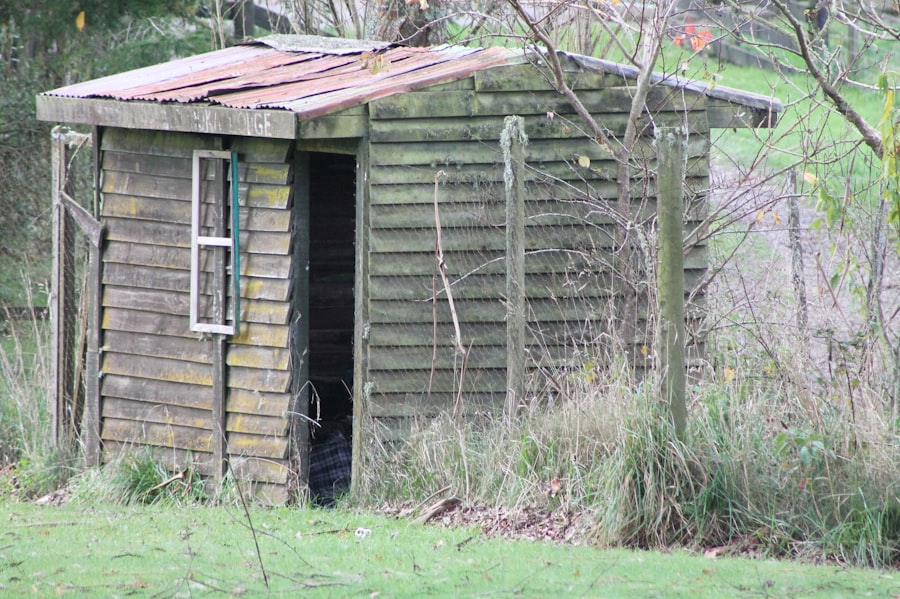Foxes are intelligent and adaptable predators that present a significant risk to backyard chicken coops. These carnivorous mammals are renowned for their stealthy hunting abilities and agility, which enable them to infiltrate enclosures and prey on chickens. Foxes are predominantly nocturnal, conducting most of their hunting activities during nighttime hours when chickens are roosting and most vulnerable.
As opportunistic feeders, foxes will exploit any available food source, making them a persistent threat to free-range chickens and those housed in inadequately secured enclosures. Foxes possess excellent digging and climbing skills, allowing them to access chicken coops that lack proper fortification. They are adept at identifying and exploiting weaknesses in fences and enclosures, capable of squeezing through small openings or gaps.
Foxes are also highly territorial, and once they have located a reliable food source, they tend to return to the same area repeatedly. This behavior necessitates that chicken owners thoroughly understand fox habits and behaviors to implement effective protection measures for their flocks. To safeguard chickens from fox attacks, it is essential to comprehend the predator’s behavior patterns and hunting strategies.
Foxes rely on stealth and agility to infiltrate chicken enclosures undetected. Their nocturnal nature means they are most active when chickens are at their most vulnerable during nighttime roosting. The opportunistic feeding habits of foxes make them a constant threat to both free-range chickens and those kept in less secure environments.
Foxes are skilled at identifying and exploiting weaknesses in fencing and enclosures, easily maneuvering through small openings. Their territorial nature and tendency to revisit successful hunting grounds underscore the importance of implementing robust and consistent protection measures for chicken coops.
Table of Contents
- 1 Securing the coop: Tips for fortifying chicken enclosures
- 2 Utilizing deterrents: Natural and artificial methods to keep foxes away
- 3 Supervising free-range chickens: Strategies for keeping an eye on your flock
- 4 Nighttime protection: Ensuring chickens are safe during the hours of darkness
- 5 Working with neighbors: Collaborating to create a fox-proof community
- 6 Emergency response: What to do if a fox attack occurs
- 7 FAQs
Key Takeaways
- Foxes are intelligent and adaptable predators, known for their stealth and agility
- Secure chicken enclosures with sturdy fencing, buried wire mesh, and secure latches
- Utilize deterrents such as motion-activated lights, predator urine, and electric fencing
- Supervise free-range chickens by using livestock guardian animals or setting up surveillance cameras
- Ensure nighttime protection by locking chickens in a secure coop and using predator-proof latches
- Collaborate with neighbors to share information and resources for fox prevention
- In the event of a fox attack, immediately remove injured chickens, secure the coop, and contact local wildlife authorities
Securing the coop: Tips for fortifying chicken enclosures
Building a Predator-Proof Enclosure
One of the most important steps in fortifying the enclosure is to ensure that it is predator-proof. This means using sturdy materials such as hardware cloth or welded wire to construct the coop and run, as these materials are more difficult for foxes to chew through or break.
Additional Security Measures
It is also important to bury the wire at least 12 inches into the ground to prevent foxes from digging underneath the enclosure. Additionally, make sure that all doors and windows are securely latched and that there are no gaps or holes that could provide access for foxes. Another important aspect of securing the coop is to provide a secure roosting area for the chickens.
Keeping the Coop Area Safe
This can be achieved by using elevated roosts that are difficult for foxes to reach, as well as providing nesting boxes that are enclosed and inaccessible to predators. It is also important to keep the area around the coop clear of debris and overgrown vegetation, as this can provide hiding spots for foxes. Finally, consider installing motion-activated lights or alarms around the coop to deter foxes from approaching.
Utilizing deterrents: Natural and artificial methods to keep foxes away

There are several natural and artificial methods that can be used to deter foxes from approaching chicken coops. One natural method is to use strong-smelling plants such as lavender, mint, or marigolds around the perimeter of the coop, as these scents are known to repel foxes. Another natural deterrent is predator urine, which can be purchased from hunting supply stores and applied around the coop to create a barrier that foxes will avoid.
Artificial deterrents can also be effective in keeping foxes away from chicken coops. One option is to install motion-activated sprinklers or lights around the perimeter of the enclosure, which will startle and deter foxes when they approach. Another option is to use sound deterrents such as ultrasonic devices or radios set to a talk radio station, as these noises can be irritating to foxes and discourage them from coming near the coop.
In addition to natural methods, there are several artificial deterrents that can be used to keep foxes away from chicken coops. Motion-activated sprinklers or lights can be installed around the perimeter of the enclosure to startle and deter foxes when they approach. Sound deterrents such as ultrasonic devices or radios set to a talk radio station can also be effective in discouraging foxes from coming near the coop.
Another option is to use predator urine, which can be purchased from hunting supply stores and applied around the coop to create a barrier that foxes will avoid.
Supervising free-range chickens: Strategies for keeping an eye on your flock
Supervising free-range chickens is essential for keeping them safe from fox attacks. One strategy is to use livestock guardian animals such as dogs or geese, which can help deter foxes from approaching the flock. These animals have a natural instinct to protect chickens and will alert you if they sense any danger.
Another strategy is to use electric fencing to create a secure perimeter around the free-range area. Electric fencing can be an effective deterrent for foxes, as it delivers a mild shock that will discourage them from attempting to breach the enclosure. Additionally, consider using portable chicken tractors or moveable fencing to limit the range of free-range chickens and keep them closer to the safety of the coop.
Supervising free-range chickens is essential for keeping them safe from fox attacks. Using livestock guardian animals such as dogs or geese can help deter foxes from approaching the flock, as these animals have a natural instinct to protect chickens and will alert you if they sense any danger. Electric fencing can also be an effective deterrent for foxes, as it delivers a mild shock that will discourage them from attempting to breach the enclosure.
Additionally, using portable chicken tractors or moveable fencing can help limit the range of free-range chickens and keep them closer to the safety of the coop.
Nighttime protection: Ensuring chickens are safe during the hours of darkness
Ensuring that chickens are safe during the hours of darkness is crucial for protecting them from fox attacks. One important step is to securely lock all doors and windows of the coop at night, as this will prevent foxes from gaining access while the chickens are roosting. It is also important to use predator-proof materials such as hardware cloth or welded wire on all openings to prevent foxes from breaking in.
Another important aspect of nighttime protection is providing adequate lighting around the coop. Motion-activated lights can startle and deter foxes when they approach, while also providing visibility for you to check on the chickens during the night. Additionally, consider using automatic door openers on the coop, which can be set to open at sunrise and close at sunset to ensure that chickens are safely secured inside during the night.
Ensuring that chickens are safe during the hours of darkness is crucial for protecting them from fox attacks. Securely locking all doors and windows of the coop at night can prevent foxes from gaining access while the chickens are roosting. Using predator-proof materials such as hardware cloth or welded wire on all openings is also important in preventing foxes from breaking in.
Providing adequate lighting around the coop can startle and deter foxes when they approach, while also providing visibility for you to check on the chickens during the night. Automatic door openers on the coop can also be used to ensure that chickens are safely secured inside during the night.
Working with neighbors: Collaborating to create a fox-proof community

Collaborating with neighbors is crucial in creating a fox-proof community. By working together, you can share information about recent fox sightings or attacks, which can help everyone in the community take necessary precautions to protect their flocks.
Organizing Neighborhood Patrols and Watch Groups
Additionally, consider organizing neighborhood patrols or watch groups to keep an eye out for any signs of fox activity in the area. This collective effort can help identify potential threats and prevent fox attacks.
Pooling Resources for Effective Deterrents
Another way to collaborate with neighbors is by sharing resources and knowledge about effective deterrents and fortification methods. By pooling resources, you can collectively invest in predator-proof materials or equipment that will benefit everyone in the community. This can include creating a network of secure enclosures that form a barrier against foxes, making it more difficult for them to access any chicken coops in the area.
Emergency response: What to do if a fox attack occurs
In the event of a fox attack on your chicken coop, it is important to act quickly to minimize further harm to your flock. The first step is to assess the situation and ensure that all remaining chickens are safe and secure inside the coop. If any chickens have been injured, it is important to provide immediate medical attention or contact a veterinarian for assistance.
After securing your flock, it is important to inspect the enclosure for any weak points or breaches that allowed the fox to gain access. Repair any damage immediately and consider reinforcing vulnerable areas with additional predator-proof materials. Additionally, consider setting traps or contacting local wildlife authorities for assistance in removing any persistent foxes from the area.
In the event of a fox attack on your chicken coop, acting quickly is crucial in minimizing further harm to your flock. Assessing the situation and ensuring that all remaining chickens are safe and secure inside the coop should be your first priority. Providing immediate medical attention or contacting a veterinarian for assistance if any chickens have been injured is also important.
Inspecting the enclosure for any weak points or breaches that allowed the fox to gain access should be done immediately after securing your flock. Repairing any damage and reinforcing vulnerable areas with additional predator-proof materials should be considered as well as setting traps or contacting local wildlife authorities for assistance in removing any persistent foxes from the area.
If you’re looking for tips on how to keep your chickens safe from foxes, you might also be interested in learning how to care for goslings. Poultry Wizard has a helpful article on how to care for goslings, which includes information on protecting them from predators and providing a safe environment for them to thrive. This article could provide valuable insights for keeping your chickens safe as well.
FAQs
What are the main threats to chickens from foxes?
Foxes are known to be a common predator of chickens. They are skilled hunters and can easily access chicken coops and runs to prey on chickens.
How can I protect my chickens from foxes?
To protect chickens from foxes, it is important to secure the chicken coop and run with sturdy fencing and wire mesh. Additionally, installing motion-activated lights or alarms can help deter foxes from approaching the coop.
Are there any natural deterrents for foxes?
Some natural deterrents for foxes include using strong-smelling substances such as garlic or predator urine around the perimeter of the coop. Additionally, having a guard dog or other livestock guardian animals can help keep foxes at bay.
What should I do if I suspect a fox is targeting my chickens?
If you suspect that a fox is targeting your chickens, it is important to take immediate action to secure the coop and run. You can also contact local wildlife authorities for advice on dealing with the fox in a safe and legal manner.
Are there any specific breeds of chickens that are more resilient to fox attacks?
While no breed of chicken is completely immune to fox attacks, some breeds are known to be more alert and better at defending themselves. Breeds such as the Rhode Island Red, Australorp, and Plymouth Rock are known for their alertness and ability to fend off predators.
Meet Walter, the feathered-friend fanatic of Florida! Nestled in the sunshine state, Walter struts through life with his feathered companions, clucking his way to happiness. With a coop that’s fancier than a five-star hotel, he’s the Don Juan of the chicken world. When he’s not teaching his hens to do the cha-cha, you’ll find him in a heated debate with his prized rooster, Sir Clucks-a-Lot. Walter’s poultry passion is no yolk; he’s the sunny-side-up guy you never knew you needed in your flock of friends!







